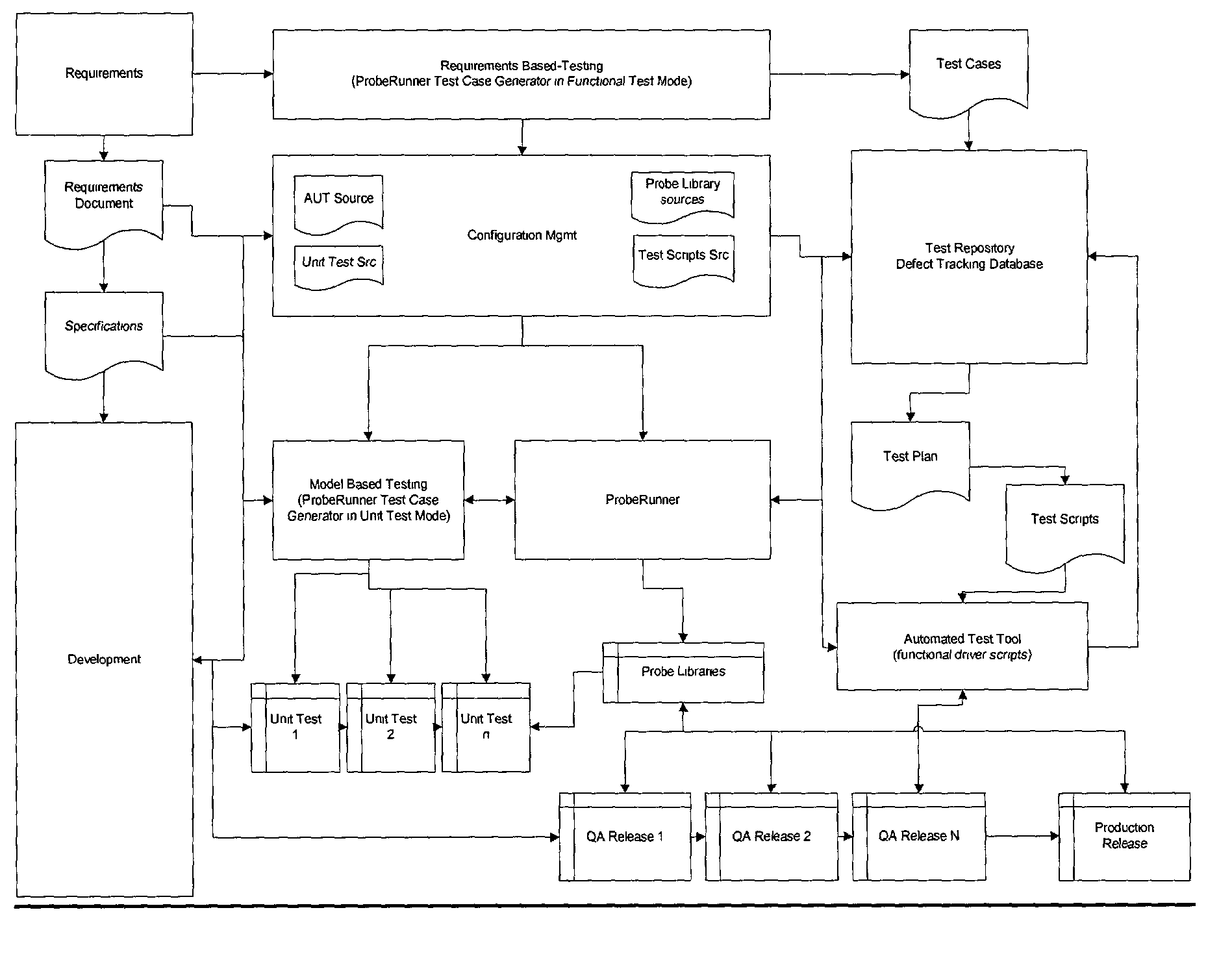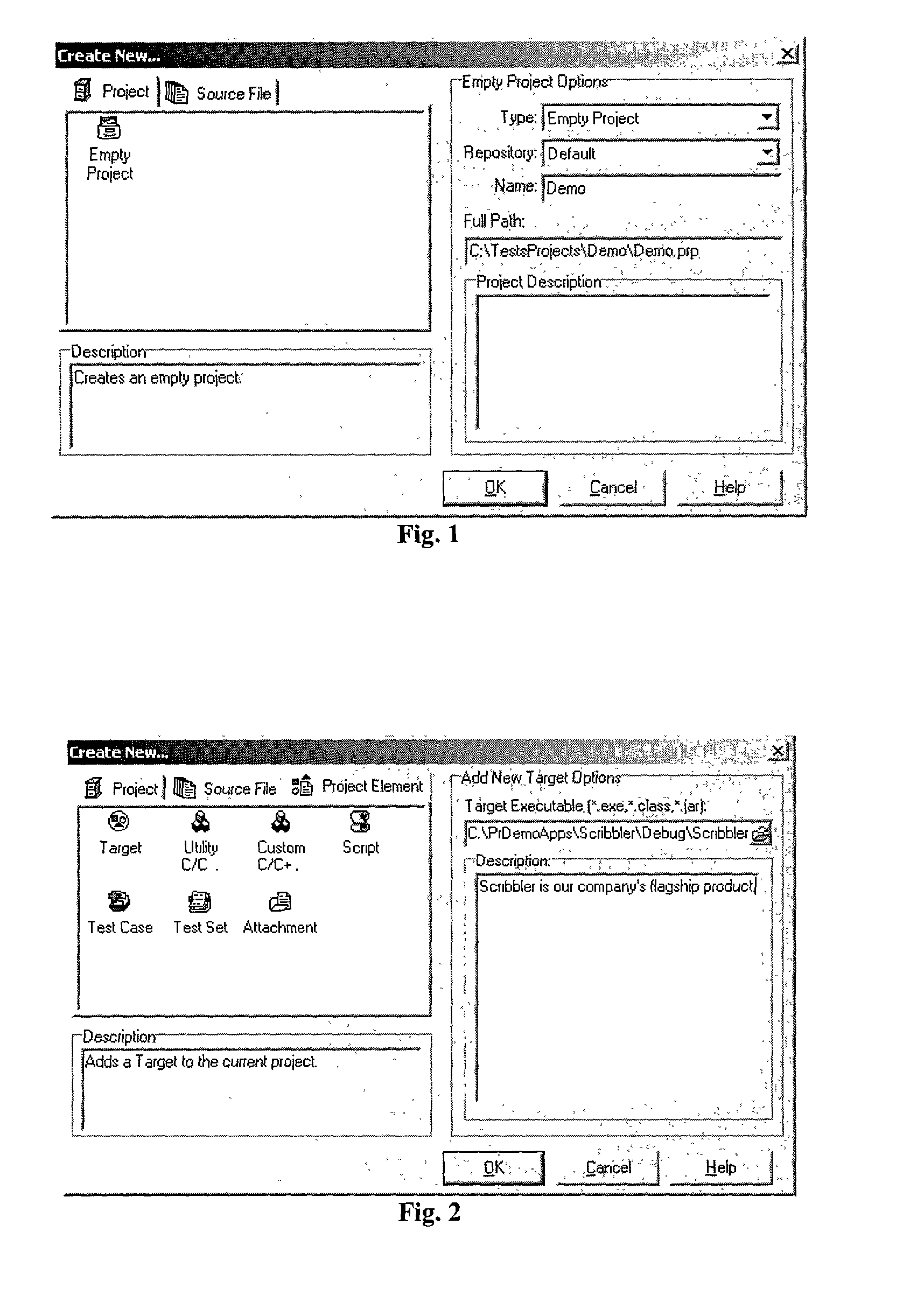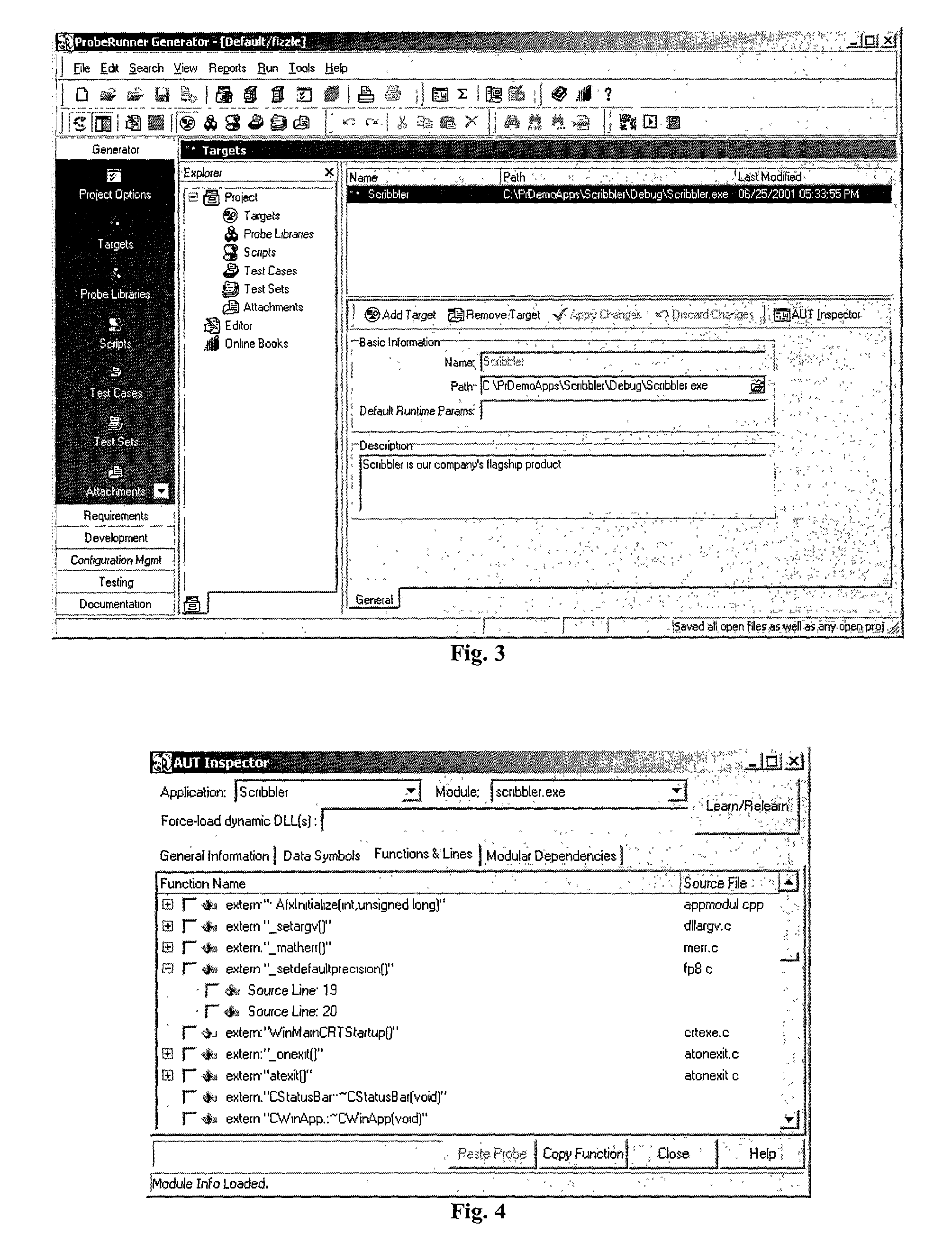Method for merging white box and black box testing
a technology of white box and black box, applied in the field of software application verification techniques, can solve the problems of affecting the state of software engineering in general, rarely cooperating between developers and testers in any methodologically meaningful way in quality assurance, and not facilitating this practice in any unified fashion
- Summary
- Abstract
- Description
- Claims
- Application Information
AI Technical Summary
Benefits of technology
Problems solved by technology
Method used
Image
Examples
Embodiment Construction
)
[0104] a. [Admin] For each machine involved in distributed testing in the project:
[0105] i. Provide an IP address and port numbers for instances of the server on each.
[0106] ii. Provide a logical name for use in Scenarios
[0107] III. Define Targets
[0108] a. For each primary executable of the Application Under Test (AUT):
[0109] i. [Developer] Code the executable source.
[0110] ii. [Developer] Build the executable, ensuring that the executable contains full debug information.
[0111] iii. [Developer] If the executable to be tested is a DLL containing general-purpose API calls, then create or identify a "driver" executable that will be used to create the instance of the DLL required for testing.
[0112] iv. [Test Engineer] Locate the executable on the test machine by browsing to it.
[0113] v. [Test Engineer] Provide a description of the executable and its significance to the AUT.
[0114] vi. [Test Engineer] Add the executable to the project, see FIG. 2.
[0115] b. For each Target executable in t...
PUM
 Login to View More
Login to View More Abstract
Description
Claims
Application Information
 Login to View More
Login to View More - R&D
- Intellectual Property
- Life Sciences
- Materials
- Tech Scout
- Unparalleled Data Quality
- Higher Quality Content
- 60% Fewer Hallucinations
Browse by: Latest US Patents, China's latest patents, Technical Efficacy Thesaurus, Application Domain, Technology Topic, Popular Technical Reports.
© 2025 PatSnap. All rights reserved.Legal|Privacy policy|Modern Slavery Act Transparency Statement|Sitemap|About US| Contact US: help@patsnap.com



